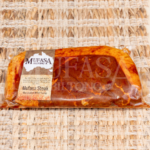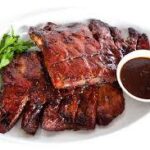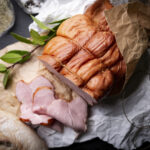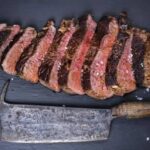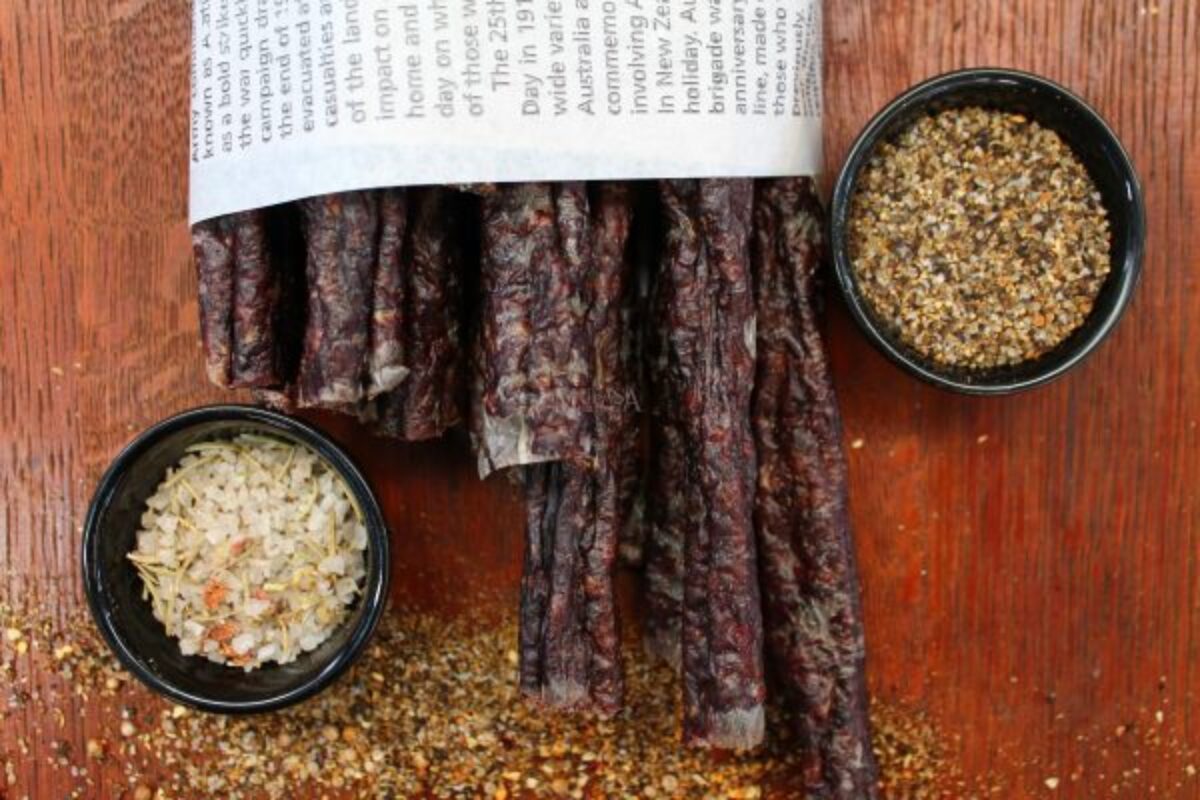
Biltong vs Droëwors – Which One to Choose
What Is Biltong? A South African Classic
Biltong, from the Dutch “bil” (thigh) and “tong” (strip), emerged as a preservation trick for long journeys. Today, it’s a versatile snack with a cult following.
How is Biltong Made?
The preparation of biltong involves:
- Meat: Beef reigns (e.g., silverside, rump), but game like kudu, springbok, or ostrich adds flair—check our Biltong Lean.
- Prep: Cut into thick strips (1-2 inches), marinated in vinegar (5% acidity), salt, coriander, and pepper for 6-12 hours.
- Drying: Air-dried (50-70°F, 40-50% humidity) for 4-14 days—moist takes less, dry takes more.
Taste & Texture
What Is Droëwors? The Spiced Sausage Twist
Droëwors, meaning “dried sausage” in Afrikaans, is a South African dried sausage made using similar drying techniques to biltong. However, instead of being cut from a whole slab of meat, it is made into thin sausages, similar in appearance to beef sticks or salami.
How is Droëwors Made?
The process includes:
- Meat: Beef (70-80%) with fat (20-30%), sometimes lamb or game—see our Drywors Traditional Flavour.
- Prep: Ground, spiced with coriander, nutmeg, cloves (1-2g each per kg), and salt; stuffed into casings (8-12mm diameter).
- Drying: Hung for 3-7 days—faster due to thinness (10-15% moisture).
Taste & Texture
Droëwors has a firm but slightly crumbly texture, thanks to the fat content in the sausage. Savory, warm, and nutty—fat lends a crumbly snap. Spices bloom without vinegar’s tang, as in our Drywors Chilli Flavour.
Key Differences Between Biltong & Droëwors
| Feature | Biltong | Droëwors |
|---|---|---|
| Type | Dried meat strips | Dried sausage |
| Meat | Beef, game, ostrich | Beef, lamb, game (higher fat) |
| Prep | Vinegar-marinated, air-dried | Spiced, cased, air-dried |
| Texture | Chewy (soft to dry) | Firm, crumbly |
| Taste | Tangy, meaty, coriander-heavy | Spiced, nutty, no vinegar |
| Drying Time | 4-14 days | 3-7 days |
| Moisture | 5-20% | 10-15% |
Nutrition & Shelf Life: What You Need to Know
Both pack protein, but fat and drying tweak their profiles:
Biltong
- Nutrition: Lean (~50g protein, 3g fat/100g) or fatty (~35g protein, 20g fat/100g)—see Bundles to compare.
- Shelf Life: Lean lasts 6 months; fatty, 2-3 weeks—check our FAQ.
Droëwors
- Nutrition: ~40g protein, 25g fat/100g—higher fat fuels longer energy.
- Shelf Life: 1-2 months—fat speeds spoilage.
Both are excellent high-protein snacks, perfect for road trips, hiking, or just casual snacking. In South Africa, it’s common to see people enjoy both together with a cold beer or as part of a snack platter.
Which Should You Choose?
Your vibe decides:
- Pick Biltong If: You love chewy, tangy meat with versatility—soft for snacking, dry for hiking. Try our Chilli Bites.
- Pick Droëwors If: You crave a spiced, sausage-like snap—perfect with drinks or platters. Go for Cabanossi.
- Try Both: South Africans pair them at braais (BBQs)—grab ours fresh via Weekly Deals.
Our South African Craftsmanship
We honor tradition with premium cuts and spice blends—biltong gets vinegar’s bite, droëwors gets nutmeg’s warmth. Peek at Biltong Quality Monitoring or Mufasa’s Journey to see our roots.
Conclusion: Biltong or Droëwors—Your South African Snack Awaits
In the biltong vs droëwors clash, both shine. Biltong offers tangy chewiness; droëwors delivers spiced snap. Sample our Biltong Lean and Drywors Traditional Flavour—or get both with Monthly Biltong Delivery. Which wins your palate? Dive into South Africa’s tastiest debate!

